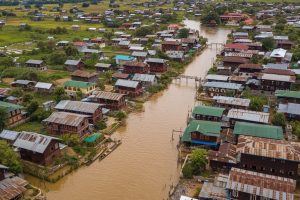Afghanistan’s security and political changes have been the focus of the world lately. These changes have resulted in emergency evacuations of internationals and the country’s vulnerable locals. In desperate efforts to flee the conflict-stricken country, families put their lives at risk at Kabul Airport which was filled with chaos. Due to war, hunger, drought, displacement, and the current pandemic, Afghanistan is still a major humanitarian operation. More than half of its population needs humanitarian aid for survival, with a daily increment of these needs.
According to the WHO Representative in Afghanistan, the organization has had to work on ensuring the safety and protection of its staff and their families by relocating them out of Afghanistan, to places without conflict. They have also had to remain put and continue delivering relief aid for the locals left behind. Since health facilities are required to stay operational, WHO has distributed health supplies to hospitals and partners in Kunduz, Kabul, and Kandahar. However, that has resulted in the near-depletion of supplies since only enough supplies to last a week remain as of now, with health facilities having used up to 70%.
Due to the closure of Kabul Airport to commercial flights, more than 500,000 kilograms of medicines and supplies are out of reach as they remain in WHO’s Dubai warehouse. This closure has also complicated efforts by countries to evacuate their people. WHO in collaboration with UNICEF has requested the international community for support in the delivery of humanitarian supplies, including the establishment of a reliable air bridge to send in supplies, with immediate effect.
WHO also aims to work with Afghanistan in preventing the loss of the past 2 decades’ health gains. These two decades have seen WHO and partners working on multiple advances with authorities, for the people’s health and well-being. They have been able to train healthcare workers, deliver medical supplies and lifesaving medicines, respond to disease outbreaks, enhance access to medical services for women and children even in remote places, and scale up the trauma care program. This has greatly reduced the number of Afghan women dying during childbirth by 60%. Child mortality has also reduced by more than 50%. Nearly 70% of all women, as opposed to only 54% in the past 2 decades, can now survive to 65 years of age.
Building on these health gains ensures a chance for a life filled with hope, dignity, and good health for every man, woman, and child. With 684 staff and health workers in all 34 provinces of Afghanistan, WHO is committed to staying and delivering, despite the ongoing insecurity challenge. WHO calls on partners and donors to work with them in promoting health and serving vulnerable people.







